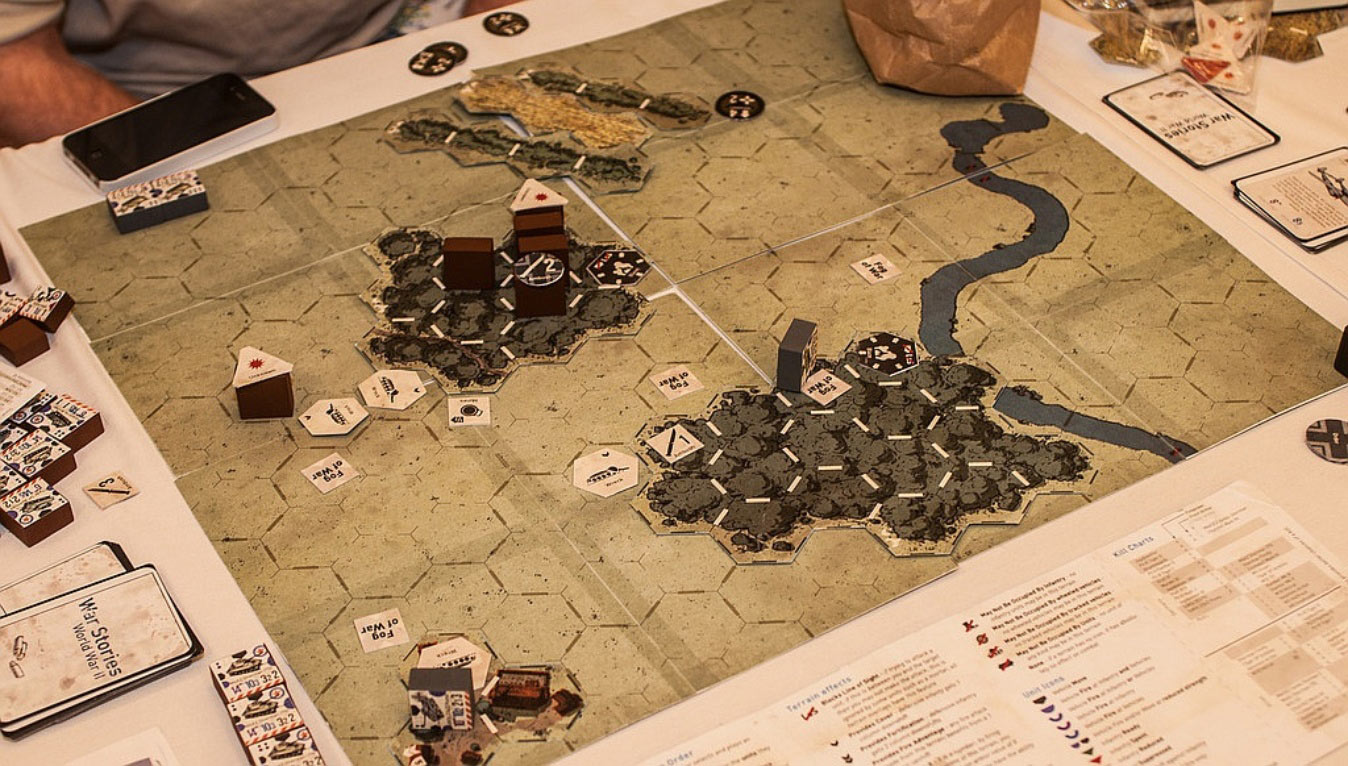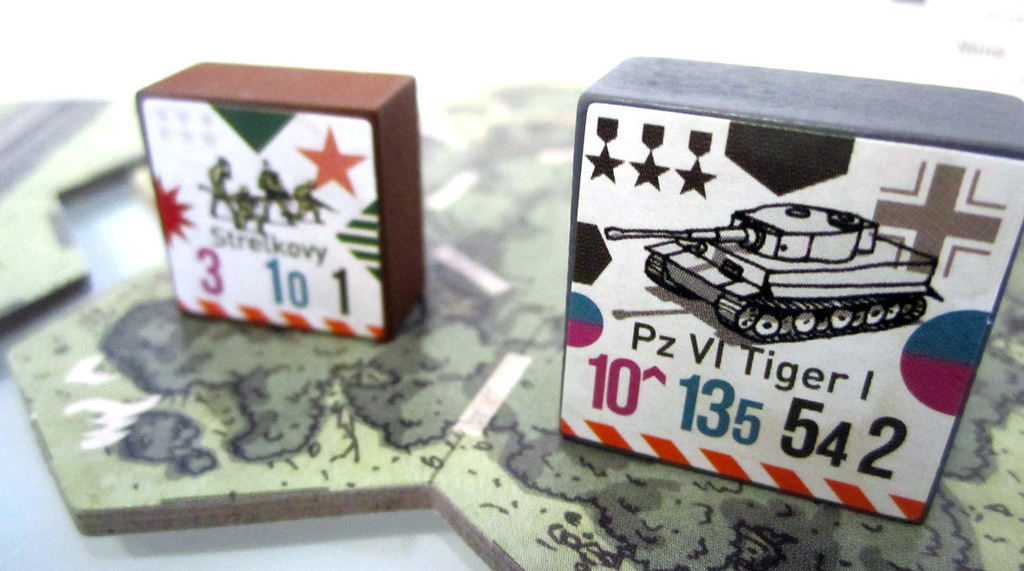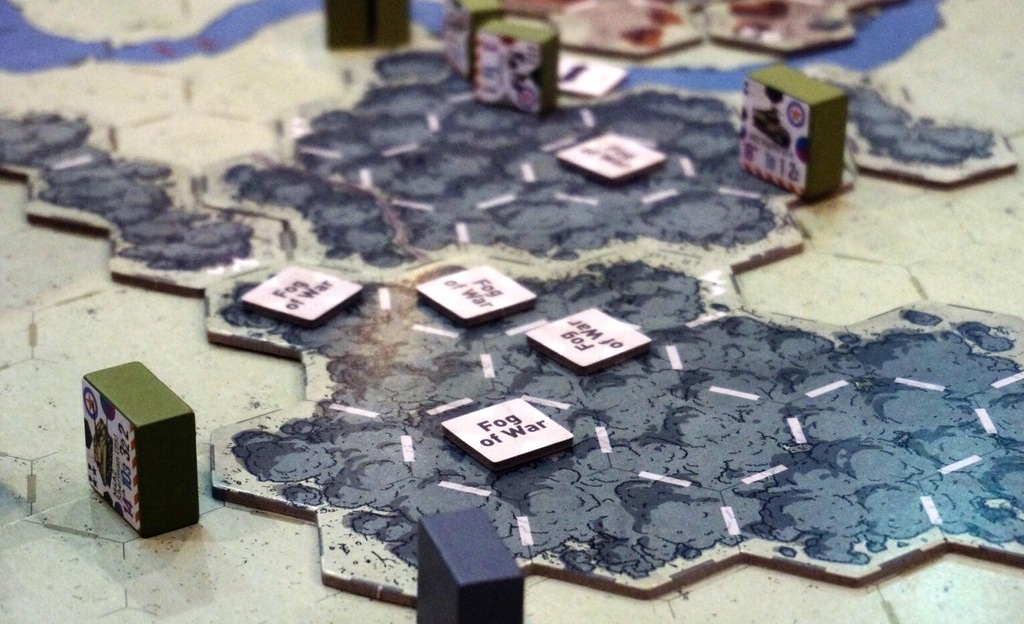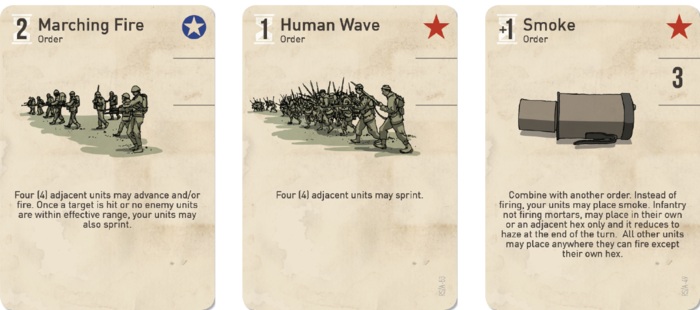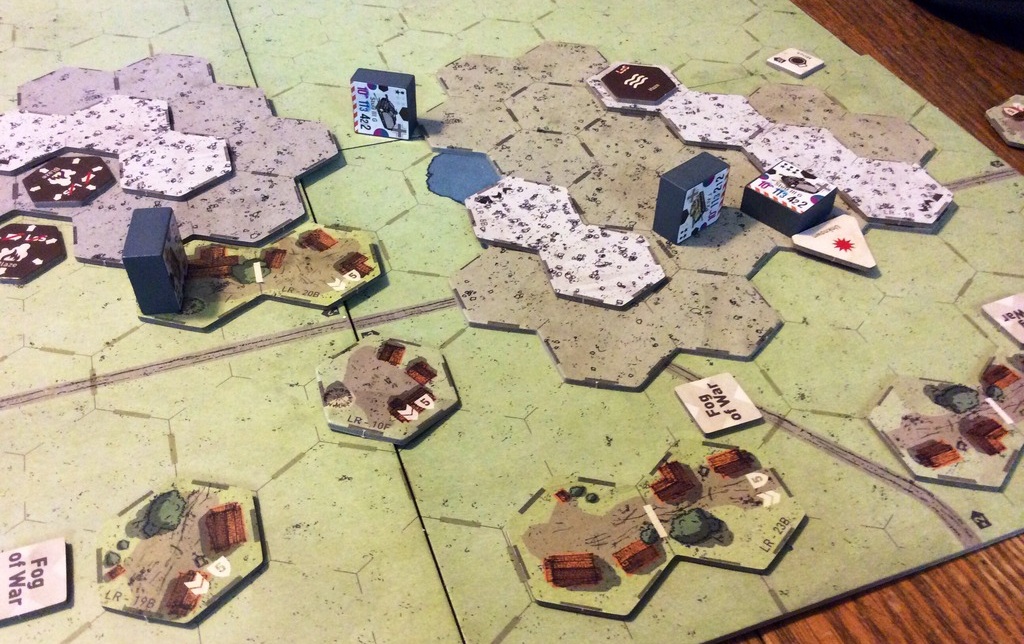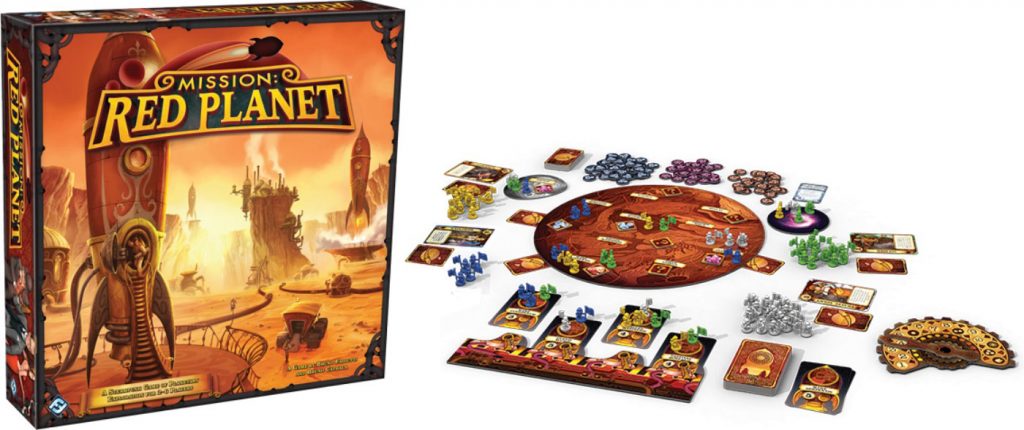(Images sourced from BoardGameGeek.)
Thrower: You’re a platoon sergeant, patrolling the Normandy hedgerows in 1944. Suddenly, a burst of automatic fire opens up from the treeline. You don’t know what it is: it could be a machine gun, or a tank. It could be a lone rifleman, or the forward elements of an enemy brigade. Each demands a different course of action, and your life, and those of your men, depend on your picking the right one. What do you do?
Replicating this is the central problem faced by tactical wargame designers. Good tactics start with determining who your enemy is and where they are. Yet for all the effort they put in to simulating weapons and doctrine, tactical board games fail to take this into account. Most of the time you can see exactly what you’re facing.
Two new designers have decided to tackle this intractable issue with their first release, War Stories. It comes in two flavours, Liberty Road for the Western front and Red Storm for the east. As if implementing hidden movement wasn’t ambition enough, it also seeks to be realistic, quick-playing and easily learned. That’s two of the wildest dragons in wargaming, slain by the same title. No wonder people flocked to support the kickstarter.
Each side has a scenario booklet that the other side isn’t supposed to read. Inside are the units, assets, re-enforcements and objectives for that side in that scenario. So you know your order of battle, but not that of your enemy. On the board face-away wooden blocks, face-down cardboard and possible bluffs means neither player has much idea what they’re up against.
Stop a moment, and consider that. You’re playing a game, and you know what you need to do to win. But you’re clueless as to what your enemy has in place to stop you. You don’t even know what they have to do to win. That feeling, like vertigo from staring down an ever-receding cliff of uncertainty, is unique in my gaming experience. And it’s electrifying.
That block could be a crack anti-tank weapon or a bunch of raw recruits. This bit of chit could be a deadly ambush or a fog-of-war bluff. There are rules for spotting to try and work out what’s where, adding another layer of strategy. Clever players can use this misty blanket for mind games. I once spearheaded an assault with a rusty armored car, hoping my opponent would mistake it for a tank and unload all their heavy ordnance on it. They did, and for a moment, I felt like a tactical mastermind.
Of course, it only works once. After playing a scenario, that delicious mystery evaporates. But at this point, you’ve got a game that’s merely just as good as all other tactical wargames. Plus it’s full of mechanics to keep players guessing as long as possible. You can still mix up units and equipment so the enemy isn’t sure what’s armed with what. And artillery and re-enforcements get shuffled into an event deck made for each game. So no-one can be sure when they might arrive.
The box promises that players can enjoy this unique slice of gaming goodness in 30-60 minutes, which seems too good to be true. It also says you can play solo which, given all the hidden information, certainly is too good to be true. As it turns out, the play time estimate is sort of lying, but not for the reasons you might imagine.
Wargames tend to be full of ponderous charts, and to have bulleted, indexed rules that look more like historical textbooks. War Stories is not such a game. It’s crammed with creative ideas to keep things fast and smooth. Rather than a movement table with terrain penalties, movement is done by groups of hexes called areas. Areas in difficult terrain are smaller than ones in open land. Instead of cross-referencing firepower and armour, then adding modifiers, you just draw a chip from a bag. Stripes along the chip correspond to range, and then you bump up or down due to powerful weapons or defensive terrain to get a result. It even tells you whether there’s an event occurring that turn.
When this works, it’s amazing. You can resolve a multi-unit vehicle and infantry firefight in a few minutes and never have to look at the rulebook. There’s even an order system for activating unit groups that’s supposed to mimic historical command structures. This is unheard of. There are reasons why wargaming rulebooks have indexes, and they’re not happy ones. Things are not supposed to be this easy. And as it turns out, they’re not.
For starters, while the system run fast and smooth there are edge cases which throw up bizarre situations. The shifting up and down of combat results can end up meaning units in good firing positions can’t miss. That doesn’t seem right. Neither does the odd opportunity fire rule that says you can only fire at a moving unit in open ground. Again, most of the time this keeps things quick. But on occasion, it punishes units doing the sensible thing and sitting in cover, because they can’t op fire at enemy units doing the same. These things don’t happen often, but they can destroy your immersion in the game.
So can the veritable army of rules ambiguities that come to light when you start playing. In the very first scenario, where one of the sides has an asset with a most confusing card. How are these supposed to be used? Are they really as powerful as they look? You’ll either stop and debate things until you reach an understanding, or you’ll look it up online. Either way, that super-slick system has ground to a halt. And if you took the latter route, you’ll find it’s not the only question. There are lots more.
The production team are answering queries, but a lot of their solutions involve telling players to use “common sense”. Which is fine, except many gamers don’t have any. Many gamers like things to be neat and clear so they don’t cause arguments or disruption. And if you are such a gamer, I’d steer clear of War Stories like the plague. Furthermore, when you read one of the compiled FAQs, it becomes clear that that short, punchy rulebook got to be short and punchy by not explaining things properly. In a couple of cases it seems to state things with utter confidence, yet the FAQ tells us that it’s wrong.
Issues like this are common with kickstarted games. And War Stories has had more than it’s fair share of problems, with key staff leaving part way through the project. The publisher is working hard to make up for things after the fact. But after all the fuss, they seem to be in two minds whether to push forward with the system, and that’s a shame. For all its flaws, the core ideas in this game are so good, so unique that they’re worth saving. In fact, if you can pay close attention to the rules updates, and apply a lick of “common sense” to your games, they’re worth experiencing right now.

